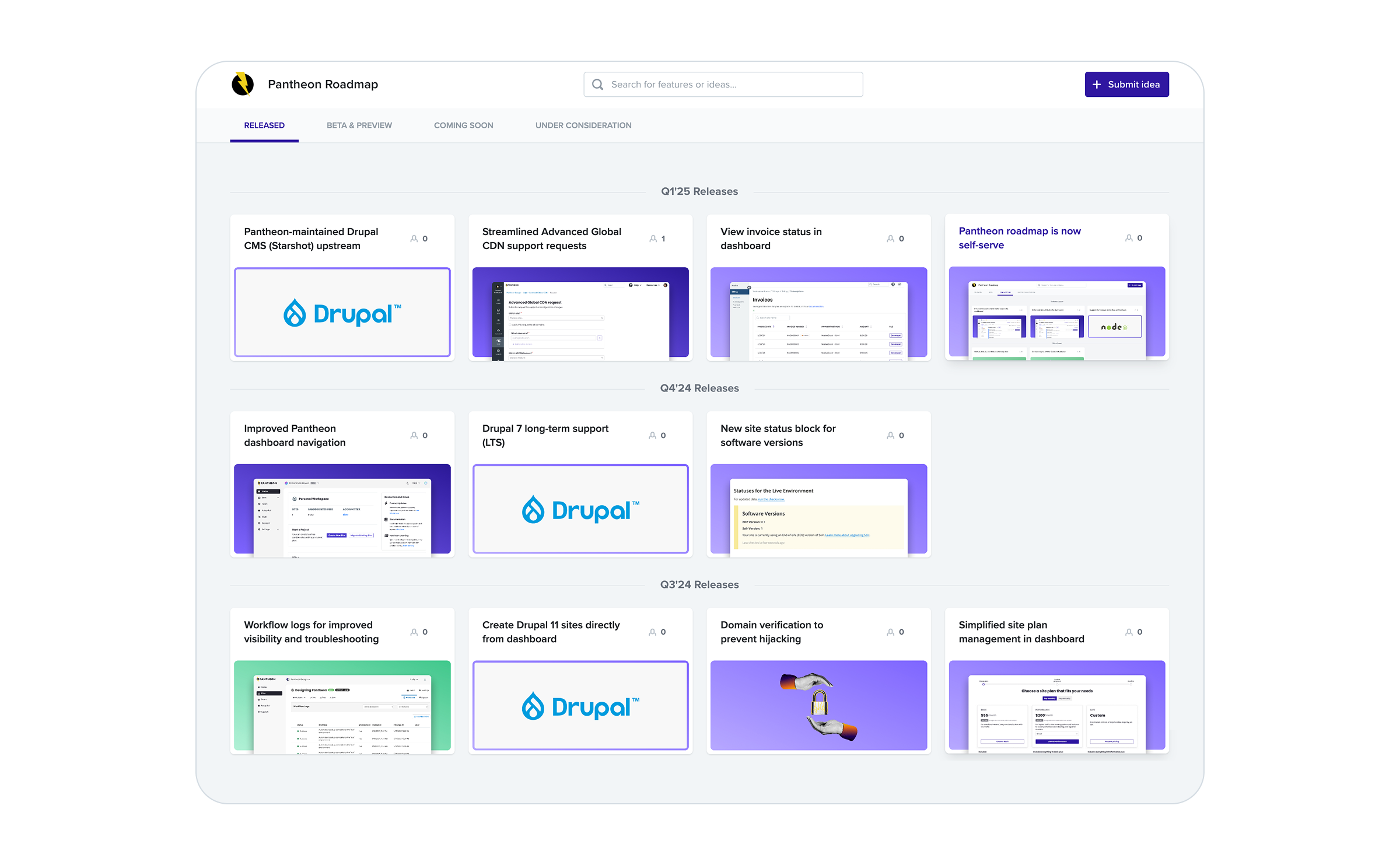Stop Sprinting in Circles—Find Your North Star
Image

Agile has been the game-changer of the digital era. It’s what the best software-engineering and product-development teams use to create successful products—and what enables their companies to consistently outpace the competition. These teams move faster and more efficiently, which is how they deliver results.
But high velocity and an iterative process alone doesn’t explain the success of these teams. Moving quickly without direction can be counterproductive. Without this North Star to guide it, a fast-moving team can easily end up sprinting in circles. Successfully adopting an agile approach requires a clear strategy with a quantifiable impact.
Your website doesn't work any differently. A great website is, after all, a digital product. But many website teams struggle to set these metrics. The good news is, it's not that complicated. The main measures of website success haven't changed a lot over the past 20 years. You don't need to re-invent the wheel; just re-align.
Break the Relaunch Cycle With a Clear KPI
Unfortunately, many website owners and marketing professionals are stuck in the ways of the past, where web projects are run like traditional ad campaigns or old school IT initiatives. These follow an unwieldy waterfall delivery process—the process responsible for the infamous year-long (sometimes multi-year) relaunch efforts that everyone dreads. They're painful, burn people out, and leave the company with a product that already feels stale by the time it goes live, without any resources left for improvements. Stakeholders wonder why all that time, money, and effort went into a website that lags far behind the business, and why they’re stuck with it.
But there’s another reason websites flounder. You guessed it—the lack of clear metrics. “Half the money I spend on advertising is wasted; the trouble is, I don't know which half.” Laments like this are so common they’re like bad one-liners, except they’re not funny. How do you know what (if any) adjustments to your ecommerce site are generating more revenue? How can you be sure your content is truly having an impact on your target audience? Or that you’ve fully optimized your ad placement to maximize impressions without driving users away?
It’s astonishing to me how often people are unclear about how to gauge the success of their website, or lack a clear concept of what job the website is doing. If you want to make progress, you need to define this and consistently track it. You need a North Star to guide you through your iterations. As measurement guru Stacey Barr says, “A KPI is for steering, not judging. So it’s of little use when it only tells you whether or not you achieved the goal, at the end. Excellent corporate KPIs can tell you to what degree you’re making a difference, as time goes by. Then you have the feedback to correct your course, if need be.”
As marketing technology matures and marketing organizations become more technical, the pace of their programs continues to accelerate. Expectations are rising, and CEOs are increasingly intolerant of hand-waving when it comes to ROI. Nobody gets excited about cutting costs—the website must fuel growth and drive the business. There’s no time to waste. Aligning on a KPI can help break the stakeholder deadlock that underlies the re-launch anti pattern, and it mitigates the risk that, as your team picks up speed, you'll start sprinting in circles.
Don't Re-Invent, Just Re-Align
Happily, North Stars aren’t elusive; on the contrary, they are fairly easy to find. Websites have a variety of jobs to do, but they're all pretty well known. Developing one should not be a complicated exercise, because your website most likely fits one of a few common archetypes (as defined by their core purpose):
- Ecommerce revenue: A site that is a point of sale should probably do the obvious thing and use revenue as the North Star. This is ultimately how you will prioritize your efforts and measure the impact.
- Ad impressions or ad revenue: If you're running a media property, your north star is going to be adjacent to revenue. You'll want to pick a metric of traffic or user engagement.
- Lead generation: Lots of websites in a B2B business context are a marketing tool whose obvious goal is to create pipeline for a business; they should focus on conversion rates and overall volume of leads. Many advocacy or campaign sites also fit this mold.
- Unique users: A website that exists to broadly communicate a message should be oriented around a total quantity of unique users as a way to measure how broadly its reach is being felt.
- Daily active users: A website that exists to engage a core audience (e.g. a community forum) should prioritize daily (or weekly) active users.
Certainly, every project is unique; you’ll want to find your own words to articulate your goal, and the right data sources to benchmark against. You need a lot of supporting metrics to run an effective organization, but those should be aligned around and complementary to your North Star, which, chances are, is right there in front of you. Don’t overthink it. You need only take a minute to step back and look up at the sky.


